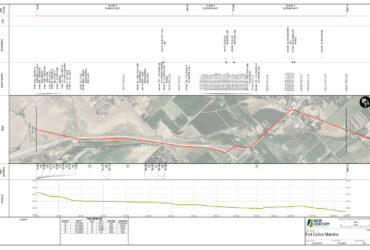Over the next few years, Esri will begin the process of retiring ArcMap; this includes ending general availability, transitioning to bug-fixes only, and moving into mature support. Because of this, we created SheetCutter Server Pro to work with Esri’s new GIS application replacement, ArcGIS Pro.
Even though ArcMap and ArcGIS Pro are both GIS applications, their architecture and user interface are very different.
This is our first blog in a series dedicated to highlighting the differences between SheetCutter Server 9.2.x and SheetCutter Server Pro that might interest you.
- Spatial data change detection is a new feature in SheetCutter Server Pro.
- When spatial event data snaps to a new location on a line, that action will trigger a new sheet.
- If the centerline moves, that will trigger a new sheet, ensuring that consumers of those alignment sheets always see the correct centerline.
- Validation has also been added since some centerline changes are expected to move outside the map window permanently. SheetCutter Server Pro now alerts you to any issues in your data that will create bad sheets and should be corrected.
- When spatial event data snaps to a new location on a line, that action will trigger a new sheet.
- SheetCutter Server Pro is more universal and more flexible than its predecessor.
This means…
- You can setup templates using any data source supported by TemplateDesigner and ArcGIS Pro. SheetCutter Server Pro will automatically trigger new sheets when:
- The data changes, even for sources where tables and triggers can’t be implemented. Why? Because with SheetCutter Server Pro, no special tables or database triggers are required.
- SheetCutter Server Pro takes a snapshot of each data source at an interval you determine; it will detect changes in Excel, Access, File Geodatabases, etc., and will automatically generate new sheets where the changes occurred.
- SheetCutter Server Pro grants a wider variety of options for use cases and types of data to be monitored and used on alignment sheets.
- You can also ensure you’re not getting any new sheets than you don’t want. New tolerance settings can be set and based on the expected accuracy of the data and the scale of map windows.
- So, for example, if events on a line move a small amount within the tolerance, that change alone will not trigger a new sheet.
That’s it for now.
Visit us again soon and we’ll discuss more differences between SheetCutter Server Pro and SheetCutter Server.



